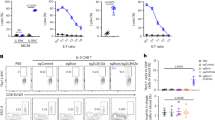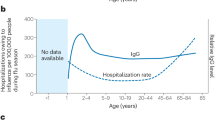Abstract
IT is now established that multiple interstrain matings may change the immunological reactivity of the female towards the foreign isoantigens of the mating male. This altered reactivity of post-partum females has been investigated in transplantation as well as serological experiments. The results of the two modes of investigation are, however, contradictory. The transplantation experiments have, with one exception1, shown a decreased2–6 or unaltered7,8 reactivity of the post-partum females against the transplantation antigens of the mating male. Serological investigations, on the other hand, have indicated sensitization of the females after interstrain matings. Haemagglutinins directed towards the antigens of the mating male have been demonstrated in the sera of outcrossed, multiparous females1,9,10. These conflicting results could be explained by the assumption that immunological enhancement11 is responsible for the prolonged survival of tissues in the transplantation experiments. Kaliss and Dagg1 investigated this hypothesis. Some of their results supported the enhancement hypothesis, but no enhancing effect of serum from multiparous females could be demonstrated after transfer to virgin mice of the maternal strain.
This is a preview of subscription content, access via your institution
Access options
Subscribe to this journal
Receive 51 print issues and online access
$199.00 per year
only $3.90 per issue
Buy this article
- Purchase on Springer Link
- Instant access to full article PDF
Prices may be subject to local taxes which are calculated during checkout
Similar content being viewed by others
References
Kaliss, N., and Dagg, M., Transplantation, 2, 416 (1964).
Breyere, E. J., and Barrett, M. K., J. Nat. Cancer Inst., 24, 699 (1960).
Breyere, E. J., and Barrett, M. K., J. Nat. Cancer Inst., 27, 409 (1961).
Breyere, E. J., and Barrett, M. K., J. Nat. Cancer Inst., 25, 1405 (1960).
Lengerova, A., and Vojtiskova, M., Folia Biol., 8, 21 (1962).
Prehn, R. T., J. Nat. Cancer Inst., 25, 883 (1960).
Medawar, P. B., and Sparrow, E. M., J. Endocrin., 14, 240 (1956).
Vener, J., Martinez, C., and Good, R. A., Proc. Soc. Exp. Biol. and Med., 106, 480 (1961).
Herzenberg, L. A., and Gonzales, B., Proc. U.S. Nat. Acad. Sci., 48, 570 (1962).
Goodlin, R. C., and Herzenberg, L. A., Transplantation, 2, 357 (1964).
Kaliss, M., Cancer Res., 18, 992 (1953).
Simonsen, M., in Prog. Allergy (edit. by Kallos, P., and Waksman, B. H.), 6, 349 (Karger, Basel/New York, 1962).
Author information
Authors and Affiliations
Rights and permissions
About this article
Cite this article
SÖRÉN, L. Immunological Reactivity of Lymphocytes in Multiparous Females after Strain Specific Matings. Nature 213, 621–622 (1967). https://doi.org/10.1038/213621a0
Published:
Issue Date:
DOI: https://doi.org/10.1038/213621a0
This article is cited by
-
Possible protecting role of maternal immunoglobulins on embryonic development in mammals
Immunogenetics (1977)
-
Immunocompetence of lymphocytes from pregnant mice studied in graft versus host reaction
Bulletin of Experimental Biology and Medicine (1977)
-
IgM-IgG1, 2, 3 Relationship during Pregnancy
Nature (1972)
-
Abrogation of Cellular Immunity to Antigenically Foreign Mouse Embryonic Cells by a Serum Factor
Nature (1969)
Comments
By submitting a comment you agree to abide by our Terms and Community Guidelines. If you find something abusive or that does not comply with our terms or guidelines please flag it as inappropriate.



